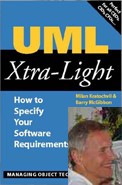1929
E. A. Link launched the first commercially
available flight simulators, called the LinkTrainers. They became efficient tools to teach flight and to show
the behavioral “logic” of an airplane to novices and junior pilots, in a safe
setup (on the ground). By WWII, Link delivered over 10,000 and they became standard
equipment at every air training school, for pilots from all Allied
nations.
1960’s
E. W. Dijkstra laid the foundation of
structured programming, software architecture, and algorithm visualization.
Also, he pointed out the limited ability of (static) lines of code to make
(dynamic) behavior clear, and he realized the expressive power of visualizing
it dynamically; put together, this paved the road to animators.
1980’s
Algorithm-independent animators started to emerge as lab tools
and research papers. Most of them animated source
code, highlighting it line by line during test execution. In 1988, I worked
with senior consultant Leif Carlson of Jackson Systems International on the
integration of the first PC-based code animator off-the-shelf (by Micro Focus
UK) with a Swedish modeling tool and code generator, the JSP-Tool. The AnimatorLink made it possible to animate behavior both as diagrams and as lines of generated code,
in sync, on one screen. It improved design transparency as well as testability.
1990’s
Animators rolled on, into
Business Process Modeling as well as
into technical documentation in
manufacturing where they complemented CAD and knowledge-based tools, especially
in automotive electronics and in other sectors where electronics augmented
many (mostly mechanical) components. Animations turned out excellent to teach senior
staff, such as mechanics or drivers, “why a modern engine works at all”.
1997
UML 1.0 was
adopted as a standard, which channeled more animation effort into UML modeling.
Among the first off-the-shelf animators
using UML were Rational/RT, and Select Business Solutions UK (I often
demonstrated Select’s Object Animator at my public UML courses, to underline
behavior in the pre-SOA era).
2005
UML 2 gradually became a
standard in 2003-2005. TeleLogic in Lund, Sweden, offered animation of UML2 Sequence Diagrams, states, and code, all
in one partitioned window. Architects, testers, and devs could use a
Sequence Diagram animator as an interactive tester
GUI, among other things. A beta was available already a year or two before
UML 2 took its final shape.
2010
Some organizations I’ve
advised on architecture and modeling over the past 5-10 years leverage
user-story or use-case animations to communicate
their architecture (ITA, EA, SA, or even legacy system portfolios) to a
variety of roles and backgrounds. If you’re in a primarily-tech business, you
can animate some of the UML (or
SysML) behavior diagrams, off-the-shelf. Whereas, if you’re in finance,
government & administration, or care, with many non-technical roles, then
it’s best to go for one type of diagram throughout (which means, even in
animations).
Often, a layered UML
Component Diagram (sometimes nicked “architect’s diagram”) is agreed upon;
however, most UML modeling tools animate behavior
diagrams, so with other diagram types (i.e. with structure) it’s practical to
hire someone with a very versatile animator tool to “project” your scenarios
directly onto your structure. History tends to repeat itself. In navigator
training, some simulators for WWII flight schools could play a sequence of
ground photographs (e.g. an approach route), like a movie in the navigator’s
“window”. The instructor kept, manually, the “ground movie” in pace with the
speed indications on dashboard; to the trainee, it looked very similar to
flying across the terrain.
After today’s leap in Machine Learning
In my previous
blogpost, I mentioned that appropriate technologies,
practices, and built-in mechanisms
for auditability, comprehensibility, predictability, traceability, and testability/V&V
are top of the AI agenda.
As soon as the opaque
logic generated in deep neural networks (in their training phase) can either be
unpacked afterwards, or structured upfront during training (into
rules or trees or case bases), it’s high time to animate or trace various scenarios through that logic. Just like in
animations in the past, this will clarify things to stakeholders, non-IT roles,
trainees, or new employees.
Trainer
at Informator, senior modeling and architecture consultant at Kiseldalen.com, main author : UML Extra Light (Cambridge
University Press) and Growing Modular (Springer), Advanced
UML2 Professional (OCUP cert level 3/3).

Milan and Informator collaborate since 1996 on
architecture, modelling, UML, requirements, and design. You can meet him
at public Architecture courses in
English or Swedish ( T1101, T1430) in April, May, and June, or Modeling courses
in May ( T2715, T2716)












1 kommentarer :
Skicka en kommentar
Trevligt att du vill dela med dig av dina åsikter! Tänk på att hålla på "Netiketten" och använda vårdat språk.